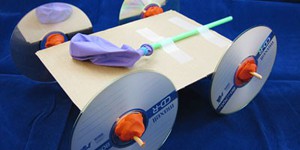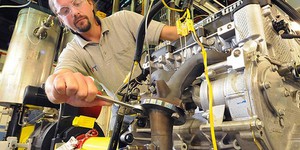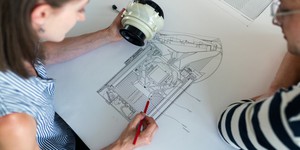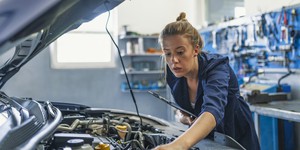Summary
Introduction
Is that a sailboat or a sail...car? Design and build a toy car powered by the wind in this fun engineering project!
Materials
- Corrugated cardboard
- Construction paper or cardstock
- Wooden skewers (3)
- Plastic straws (2)
- Plastic bottle caps (4)
- Tape
- Scissors
- Hobby knife
- Fan
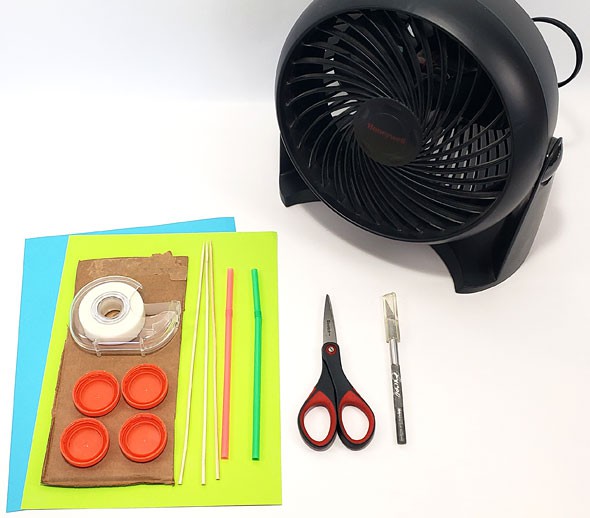 Image Credit: Ben Finio, Science Buddies / Science Buddies
Image Credit: Ben Finio, Science Buddies / Science Buddies
Prep Work
Instructions
- Cut out a piece of cardboard to form the body of your car.
- Tape two straws to the bottom of your car, one at each end to form the axles. Make sure the straws are parallel.
- Use the hobby knife to carefully poke a "+"-shaped hole in the center of each bottle cap.
- Push a wooden skewer through the hole in one of the bottle caps.
- Thread the other end of the skewer through one of the straws.
- Push a bottle cap onto the end of the skewer opposite the first bottle cap. You just made an axle with two wheels!
- Repeat steps 4 through 6 to make the other axle.
- Make sure the axles can spin and the car can roll smoothly without getting stuck. If needed, adjust the wheels so they are not too wobbly.
- Use the hobby knife to poke a small hole in the middle of the cardboard.
- Insert a wooden skewer upright into the hole to form a mast. Secure it at the base with plenty of tape. If it is still too wobbly, you can build a diagonal support out of a piece of cardboard.
- Cut out a shape for a sail from a piece of paper.
- Poke the upright skewer through both ends of the sail to hold it in place.
- Place your car in front of a fan, turn on the fan, and watch it go!
- Experiment with your car. Can you change the design to make it faster?
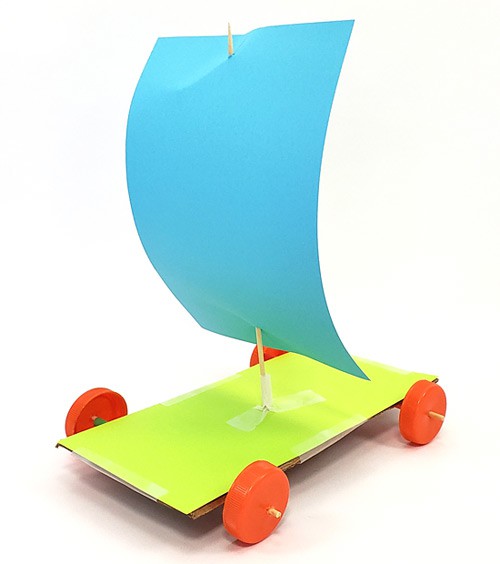 Image Credit: Ben Finio, Science Buddies / Science Buddies
Image Credit: Ben Finio, Science Buddies / Science Buddies
What Happened?
When you turn on the fan, the moving air pushes on the car's sail. This causes the car to move forward. In order for the car to roll smoothly, the axles need to be parallel (aligned with each other) and the wheels need to be centered on the axles. If the axles are crooked or the wheels are off-center, they may get stuck as they spin.
Digging Deeper
This is a good project to demonstrate physics concepts like mass, forces, and friction. For example, what happens if you make the sail a different size or change its shape? A bigger sail will catch more moving air, which exerts a bigger push (force) on the car. You might think that means a bigger sail will always make the car go faster. However, a bigger sail is also heavier, and can be more difficult to support without the mast falling down. A sail that is too tall could even make the entire car so top-heavy that it tips over! You can also experiment with different materials for your wheels and axles. Are some easier to build? Do some spin more smoothly than others? There is no "right" answer and you will need to experiment to find out!
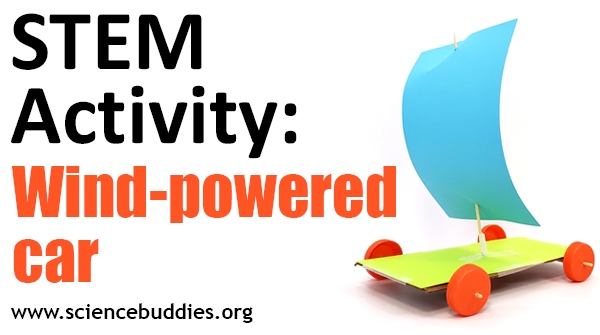 Image Credit: Science Buddies
Image Credit: Science Buddies
Ask an Expert
For Further Exploration
- Put your fan on the floor in a hallway or a large room. Measure how far your car goes before it stops with different size and/or shape sails.
- If you have a stopwatch, measure how fast your car can go over a certain distance with different size and/or shape sails.



